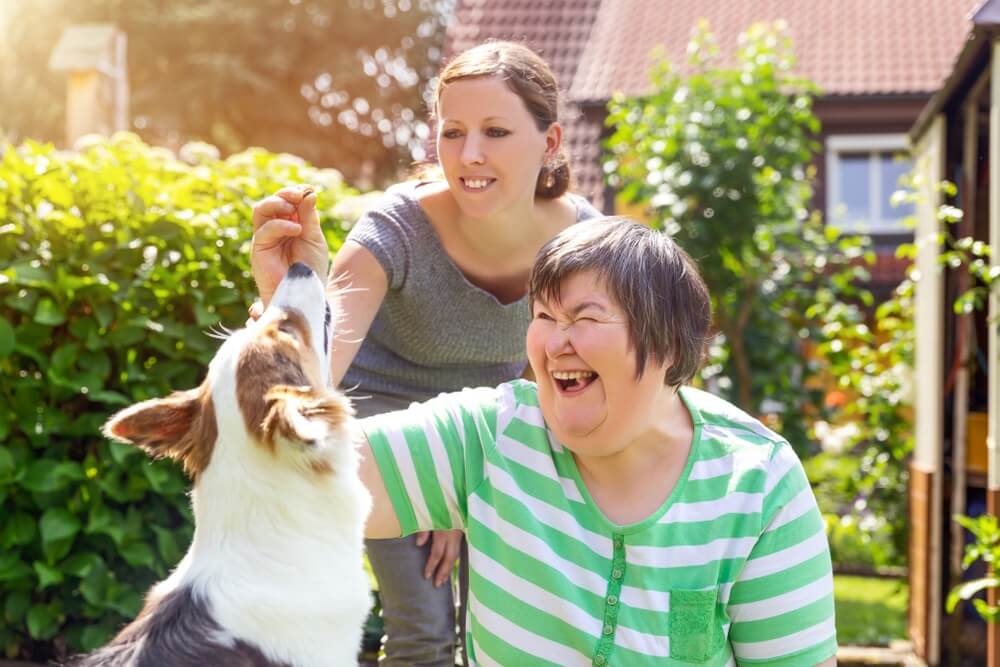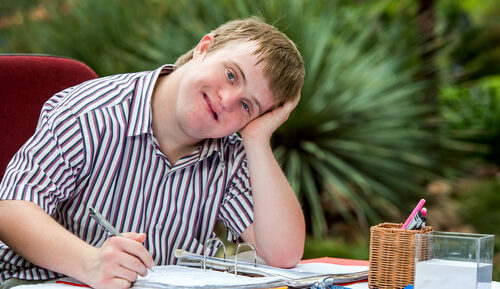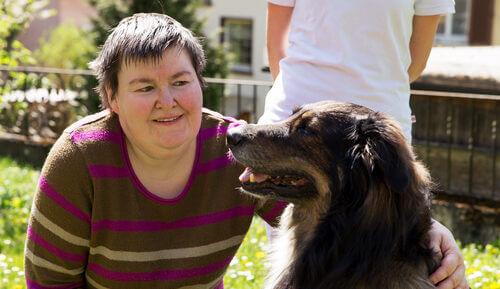
Page contents
People with learning disabilities have difficulties in learning new skills such as reading, writing and spelling, understanding and processing information, communicating and interacting with others.
Depending on what type of learning disability a person has, they may still be able to live by themselves and work but struggle with specific learning tasks.
However, a person with severe and profound learning disabilities may need care 24 hours a day and help with daily living, eating and personal care.
A child with a learning disability may have special educational needs (SEN), such as a learning difficulty i.e. dyslexia or dyspraxia. A learning disability is incurable and will affect a person their whole life.
According to government figures, the rising number of people with a learning disability in the UK is around 1.5 million. The number includes around 350,000 people with a severe form.
A person with a learning disability functions at a lower intellectual ability in relation to their age, generally considered to be equivalent to an IQ of 70 or lower.
Types of learning disabilities
The types are separated by level of severity and include mild, moderate, severe and profound and multiple learning disabilities (PMLD).
Learning disabilities affect people differently. People may have completely different experiences, depending on their abilities and the support they receive.
It may not be obvious that someone has a mild learning disability as they may only have small difficulties that could go unnoticed. They may be able to communicate well, work and live independently but learn new skills at a slower pace.
Someone with a moderate learning disability will need more support to cope with daily life as it will have a greater impact on their development and education. However, they may still be able to work.
A person with PMLD has a combination of disabilities that have a significant impact on their ability to live their life independently. A person with PMLD could have severely reduced mobility, difficulties with seeing and speaking as well as hearing.
As a result, they may require complex care and help with everything from drinking, washing to going to the toilet. Although someone with PMLD may require 24-hour care, they could still learn to communicate and make choices about their own life with the right support.
What causes a learning disability?
A learning disability occurs when the brain is developing either before birth, during birth or in early childhood. The cause can sometimes be unknown but can include:
- an inherited condition
- a premature birth
- abnormal chromosomes
- the mother becoming ill during pregnancy
- a baby not getting enough oxygen
- illnesses or injury in early childhood
There are several conditions and neurological disorders that often involve or cause some type of learning disability, including Down’s syndrome, autism, Meningitis, epilepsy or cerebral palsy.
How is a learning disability diagnosed?
A learning disability can be diagnosed either during pregnancy or after the child is born. Getting a diagnosis will help you to better understand your child’s needs and what support is available to help them through education and other aspects of life.
If you have concerns about your child’s development, you should speak to your GP. The diagnosis process can be lengthy and involves several health and social care professionals.
Diagnosis during pregnancy
If there are any concerns during pregnancy, tests will be conducted to check the baby’s progress and how likely they are to develop genetic conditions.
The test alternatives are Amniocentesis and Chorionic Villus Sampling (CVS).
Generally, Amniocentesis is recommended to:
- women over the age of 35
- women who have previously had a child with a disability
- women whose family history suggests something may happen
The test checks for genetic or chromosomal conditions, such as Down’s syndrome.
CVS is a test that can be conducted during an earlier stage as an alternative to Amniocentesis, to detect birth defects, genetic diseases and other issues.
There are possible treatments if the tests reveal that there is a problem. If the baby shows a serious abnormality, you could be offered to terminate the pregnancy.
This decision should not be taken lightly. Find out as much as you can about the condition and speak to the doctor and people close to you before you make it.
Diagnosis after birth
There are various ways to diagnose a learning disability after a child is born. Normally, a GP makes the diagnose but is not always the person to spot the signs.
It is common for parents and teachers to be the first people to become aware that a child is developing slower in certain areas compared to others. It is important to note that all children develop at different rates, but some may have underlying problems that cause delays.
A child could be diagnosed at a development review, conducted to monitor their growth and health. The review checks speaking and behaviour, and that the child is reaching their developmental milestones.
A diagnosis can also be made through a psychological test, which examines children’s abilities to compare them to what is typical for that age.
If you are worried about your child’s development, it is advisable to contact your GP for advice and guidance.
It can be difficult to accept that your child may have a learning disability but getting a diagnosis will help you find the right support.
Getting a diagnosis will also help you understand your child’s needs and focus on their strengths and what they can do, rather than what they cannot.


